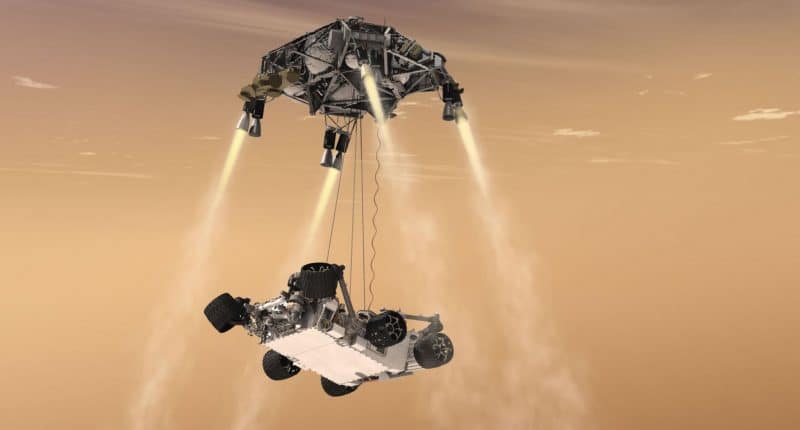Perseverance is the key to success, they say. On Friday, National Aeronautics and Space Administration (NASA) can claim the same, as their Mars rover Perseverance successfully touched down on the Red Planet at around 2:30 am, after streaking through the orange Martian sky, bringing NASA another step closer to its ambitious quest of finding out whether life ever existed on Mars.
“What an amazing day,” a joyful Steve Jurczyk, NASA’s acting administrator, said shortly after the landing was confirmed.
“This landing is one of those pivotal moments for NASA, the United States, and space exploration globally – when we know we are on the cusp of discovery and sharpening our pencils, so to speak, to rewrite the textbooks,” said acting NASA Administrator Steve Jurczyk. “The Mars 2020 Perseverance mission embodies our nation’s spirit of persevering even in the most challenging of situations, inspiring, and advancing science and exploration. The mission itself personifies the human ideal of persevering toward the future and will help us prepare for human exploration of the Red Planet. What an amazing team, the work through all the adversity and all the challenges that go with landing a rover on Mars, plus the challenges of COVID …just an amazing accomplishment,” he added.
The successful landing came after a seven-month journey in space and facing “seven minutes of terror” as it entered the Martian atmosphere. Perseverance became the fifth NASA rover ever to touch down on Mars after Sojourner, twin rovers Spirit and Opportunity, and Curiosity, the US space agency said. “Perseverance will spend the coming years scouring for signs of ancient microbial life in a historic mission that will bring back samples from Mars to Earth and prepare the way for future human visitors”, NASA said.
Perseverance, NASA’s biggest-ever, and most advanced rover sent two images within minutes of landing in the Jezero crater on Mars. The rover, nicknamed “Percy,” is equipped with tons of advanced technology, including 25 cameras and two microphones. Over the next two years, Percy will use its 7-foot (2-meter) arm to drill down and collect rock samples with possible signs of bygone microscopic life. It also contains a miniature helicopter, nicknamed, “Ingenuity,” designed to test the first powered, controlled flight of an aircraft on another planet. If successful, the 4-pound whirlybird could lead to low-altitude aerial surveillance of distant worlds.
The six-wheeled rover is about the size of a car and the mission duration as of now is set for at least one Martian year, or 687 Earth days.
Chalk-size samples will be sealed in tubes and set aside on Mars to be retrieved by a fetch rover and brought homeward by another rocket ship, hopefully as early as 2031. Percy will also conduct experiments where it will convert small amounts of carbon dioxide in the atmosphere into oxygen, a process that could be a boon to future astronauts by providing breathable air and an ingredient for rocket fuel. However, NASA said that astronauts did not fit in with its plans anytime soon.
“We’re not ready to go there with astronauts yet, but the robots are ready,” said JPL director Michael Watkins on the broadcast. “We start by sending, you know, our eyes and arms there in the form of a robot. It is just fantastic to be able to do that and to learn from each rover, learn from the science and the engineering, and make the next one better, and make more and more discoveries. Every time we do one of these missions, we make fabulous discoveries — and you know, each one is more exciting than the last.”
The Tech Portal is published by Blue Box Media Private Limited. Our investors have no influence over our reporting. Read our full Ownership and Funding Disclosure →






